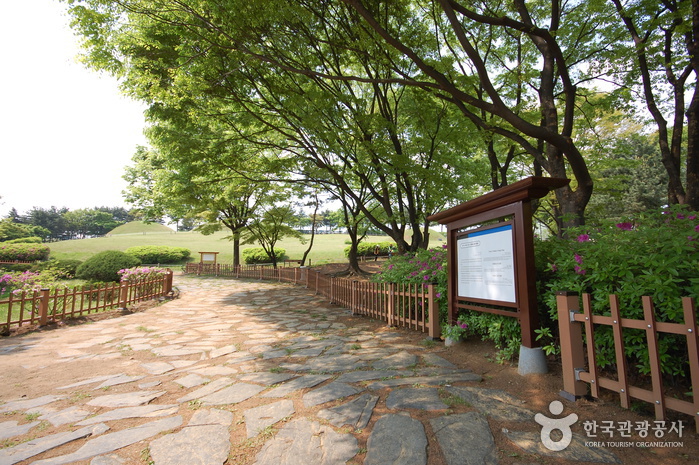Soseoul Hannam (소설한남)
5.2Km 2024-02-22
B-B1, 21-18 Hannam-daero 20-gil, Yongsan-gu, Seoul
Soseoul Hannam is a Korean fine-dining located in Hannam-dong. It offers modern interpretations of traditional Korean cuisine. The menu consists of lunch and dinner courses. Popular dishes include sliced raw fish served with fischer’s ragwort and aged kimchi, as well as charcoal-grilled spicy stir-fried webfoot octopus and chicken dishes. It's also known for its diverse selection of traditional liquors for pairing. In 2023, it was selected for the Michelin Guide Seoul.
Olive Young - Geumho Branch [Tax Refund Shop] (올리브영 금호)
5.2Km 2024-04-18
302, Dokseodang-ro, Seongdong-gu, Seoul
-
Olive Young - Hannam Ogeori Branch [Tax Refund Shop] (올리브영 한남오거리)
5.2Km 2024-04-16
1F, 65-1, Dokseodang-ro, Yongsan-gu, Seoul
-
Kwangjuyo - Hannam Branch [Tax Refund Shop] (광주요 한남)
5.2Km 2024-06-27
28, Hannam-daero 20-gil, Yongsan-gu, Seoul
-
Olive Young - Achasan Station Branch [Tax Refund Shop] (올리브영 아차산역)
5.2Km 2024-04-18
1F, #104, #110, and #111, 671, Cheonho-daero, Gwangjin-gu, Seoul
-
Seoul Upcycling Plaza (서울새활용플라자)
5.2Km 2024-01-05
49 Jadongchasijang-gil, Seongdong-gu, Seoul
Saehwaryong is a Korean term for upcycling, a process of redesigning or recycling discarded resources or materials to give them a new value or purpose. Seoul Upcycling Plaza operates upcycling-related exhibitions, upcycling practice education and experience programs, design studios, upcycling stores, workshops, and more. It is a great place to look around for ideas and inspirations on how to use products for longer periods of time. The plaza demonstrates the first step to creating a resource-recycling society.
CheongKwanJang - Hannam Branch [Tax Refund Shop] (정관장 한남)
5.2Km 2024-04-17
#118, 60, Hannam-daero, Yongsan-gu, Seoul
-
Koibito - Gangnam Main Branch [Tax Refund Shop] (고이비토 강남본점)
5.2Km 2024-04-18
310-3, Banpo-daero, Seocho-gu, Seoul
-
Bongsanok (봉산옥)
5.2Km 2024-03-25
5-6 Banpo-daero 8-gil, Seocho-gu, Seoul
+82-2-525-2282
Bongsanok, located near the Seoul Arts Center, specializes in manduguk (mandu soup), known for its signature spicy twist with a generous sprinkling of chili pepper powder. The restaurant’s celebrated manduguk features Hwanghae-do-style mandu, stuffed with a savory blend of minced meat, kimchi cabbage, bean sprouts, and chives, all served in a rich beef brisket broth that has been meticulously boiled for twelve hours.
Seoul Bangidong Ancient Tombs (서울 방이동 고분군)
5.2Km 2022-12-29
219, Ogeum-ro, Songpa-gu, Seoul
+82-2-2147-2800
The ancient tombs in Bangi-dong were discovered during the land readjustment project of Jamsil-jigu District in 1975. A total of eight ancient tombs were excavated until 1976, and the site was restored into a park in 1983. The Bangi-dong area was originally a low line of hills with an altitude of 30-50 meters above sea level, but it has been made into flatland for urban development purposes. Tomb numbers 1 to 6 lie on the same hill, while tomb no. 7 and 8 are located on another hill a short distance away.
All eight tombs have circular burial mounds. The insides of the a tomb feature a square or rectangular-shaped burial chamber with earthen ground and stone walls, and a passage leading from the tomb entrance to the chamber. However, details of the burial chambers vary by tomb. Most of the tombs had been robbed before the investigation, but a few relics such as plates and pots have been excavated. At the time of excavation, the relics were presumed to have come from the Baekje dynasty (18 BC-660 AD), but it is now estimated that they date back to the Unified Silla Period (676-935 AD).

![Olive Young - Geumho Branch [Tax Refund Shop] (올리브영 금호)](http://tong.visitkorea.or.kr/cms/resource/65/2878765_image2_1.jpg)
![Olive Young - Hannam Ogeori Branch [Tax Refund Shop] (올리브영 한남오거리)](http://tong.visitkorea.or.kr/cms/resource/48/2889448_image2_1.jpg)
![Kwangjuyo - Hannam Branch [Tax Refund Shop] (광주요 한남)](http://tong.visitkorea.or.kr/cms/resource/71/3314171_image2_1.jpg)
![Olive Young - Achasan Station Branch [Tax Refund Shop] (올리브영 아차산역)](http://tong.visitkorea.or.kr/cms/resource/90/2878790_image2_1.jpg)
![CheongKwanJang - Hannam Branch [Tax Refund Shop] (정관장 한남)](http://tong.visitkorea.or.kr/cms/resource/34/2888134_image2_1.jpg)
![Koibito - Gangnam Main Branch [Tax Refund Shop] (고이비토 강남본점)](http://tong.visitkorea.or.kr/cms/resource/05/2889105_image2_1.jpg)

 English
English
 한국어
한국어 日本語
日本語 中文(简体)
中文(简体) Deutsch
Deutsch Français
Français Español
Español Русский
Русский